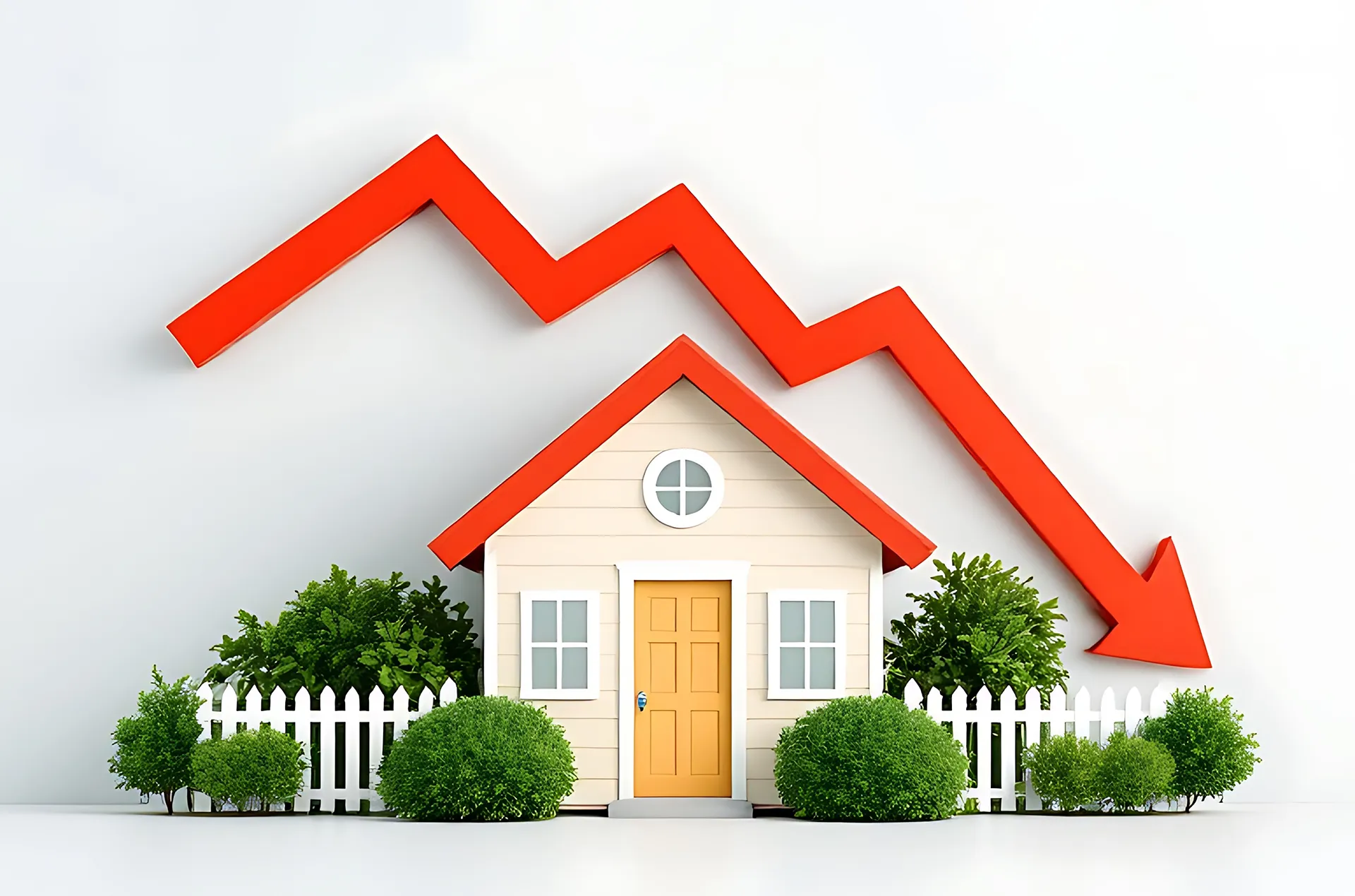When mortgage rates plunge, the entire economy shifts. Let’s unpack the ripple effect that impacts the homebuying process, the housing market, and the effect that the Federal Reserve (Fed)’s decisions have locally and globally. In a nutshell, lower mortgage rates affect both home buyers and homeowners. When rates drop, home loans are easier to get. Lower mortgage rates reduce monthly payments and allow for refinance options for existing homeowners.
Naturally, affordability leads to surging home sales and endless mortgage loan applications and keeps the National Association of Realtors (NAR) swimming in home sales. Let’s explore which housing markets are ideal and learn what has historically happened with Federal Reserve rate cuts.
As Mortgage Rates Plunge, What’s the Impact?
Lower mortgage rates shift real estate trends, allowing buyers to qualify for more without increasing monthly payments. These shifts are especially beneficial for first-time buyers who need affordability or buyers with smaller down payments. Additionally, when rates drop, even one percentage point makes a significant impact. Freddie Mac and the Mortgage Bankers Association indicate that many homeowners strategically refinance to new loan products as the market shifts—for example, adjustable rate mortgages to 30-year fixed-rate mortgages or 15-year fixed-rate. Lower interest rates work by reducing mortgage payments, and often, owners draw home equity for renovations to boost home values.
The housing market shifts as lenders reduce rates. The American housing market follows specific trends. Historically, as rates reach their lowest levels in America, home prices skyrocket due to increased competition. As the market inflates, the Nationwide Mortgage Licensing System (NMLS) fills with properties for sale, and home purchase bidding wars begin. “The responsiveness of prospective home buyers to even small changes in rates illustrates that affordability headwinds persist” in the housing market, says Sam Khater, Freddie Mac’s chief economist.
As Mortgage Rates Plunge, the Markets Surge
In today’s climate, it’s hard to process the changes within the nation from last week to last year. Many Americans struggle to buy groceries and make last month’s car and mortgage payments. In an incredibly volatile world, with inflation at unprecedented heights, following central bank trends may not be at the top of the priority list.
According to Jerome Powell, “The real issue with housing is that we have had, and are on track to continue to have, not enough housing. And so it’s going to be challenging,” Powell said. “This is not something that the Fed can really fix. But I think as we normalize rates, you’ll see the housing market normalize.”
Overall, Fed rate cuts reduce borrowing costs across America’s economic structure. Accordingly, all loan rates traditionally follow suit, making auto, personal, and leveraged financing more affordable. As this happens, prospective homebuyers gear up for future rate reductions, lessening the barriers to homeownership.
Let’s talk about Wall Street.
As presidential leadership shifts from Biden to Trump, market volatility is inevitable. The same is accurate regarding rate cuts. Wall Street is notorious for reactions to trends both nationally and globally. As stocks and real estate markets fluctuate, the macro impact on industries ripples throughout the supply chain. For example, related industries follow suit as real estate home sales shift upward. As homes are selling, lumber prices and manufacturing demand rise. These shifts require broad-scale manufacturing of goods such as concrete, paint, furniture, and other related products.
Who’s Keeping Watch when Mortgage Rates Plunge
Here are some trusted online sources for tracking average rates when mortgage rates plunge, market predictions, and trends in real estate and mortgages. For:
- Government-backed data: Freddie Mac, Fannie Mae, and the Federal Reserve.
- Housing market-focused insights: National Association of Realtors.
- Financial news and economic trends: Bloomberg & The Wall Street Journal.
- AI-driven and data-heavy analytics: CoreLogic.
Is it best to Wait for a Mortgage Rate Plunge?
Predicting the future isn’t easy, and evaluating the best time to buy a home is situational among buyers. Whether the plan is to apply for a loan in the coming months, days, or years, researching agents and lenders is essential in the home-buying journey. Homeownership is within reach, and the right lender transforms dreams into reality. Connecting with a trusted mortgage professional provides borrowers with long-term planning strategies and expert guidance. Let’s get the ball rolling and connect with a lender who can help.
The steps are simple:
1. Schedule a Call: An experienced loan officer can discuss your lending needs and guide you through the possibilities.
2. Get Approved: We’ll help you through the mortgage application process and facilitate the steps for approval.
3. Exhale: Put your feet up and feel secure knowing you made the best decisions about your home loan.
With proper guidance, you can get your first home, accommodate your growing family, and start that renovation project—whatever goal is on the horizon. An alliance with Mortgage Insiders will give you the confidence to know that your mortgage loan is setting you up for financial success. Mortgage Insiders offers today’s latest financial news and mortgage trends. Check out our channel for current events.





